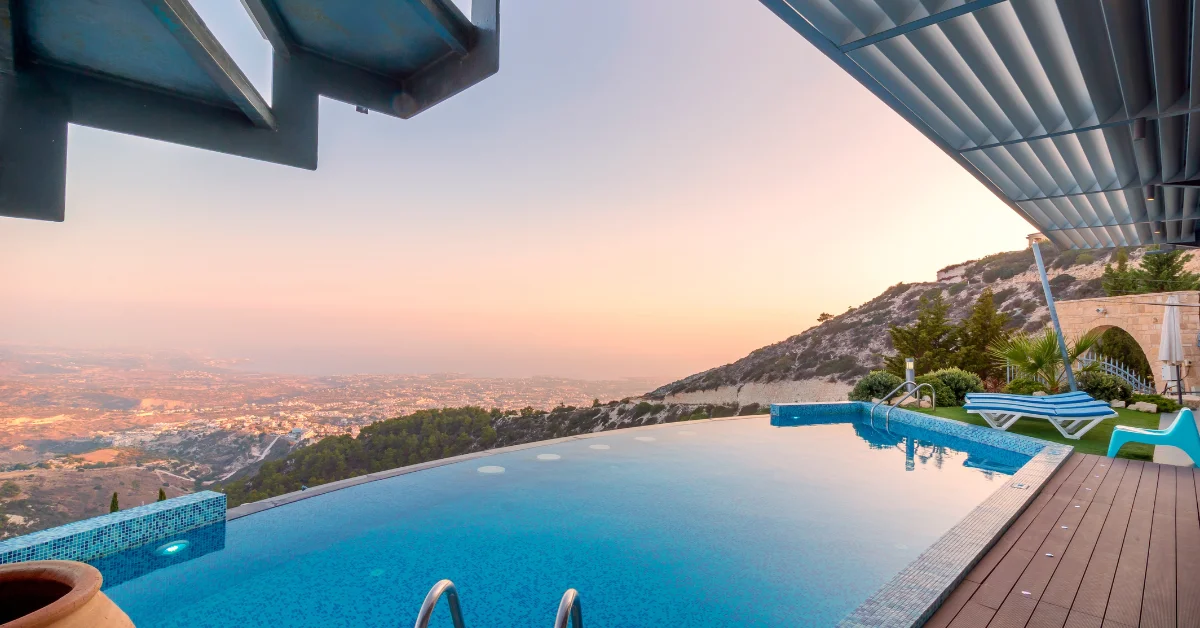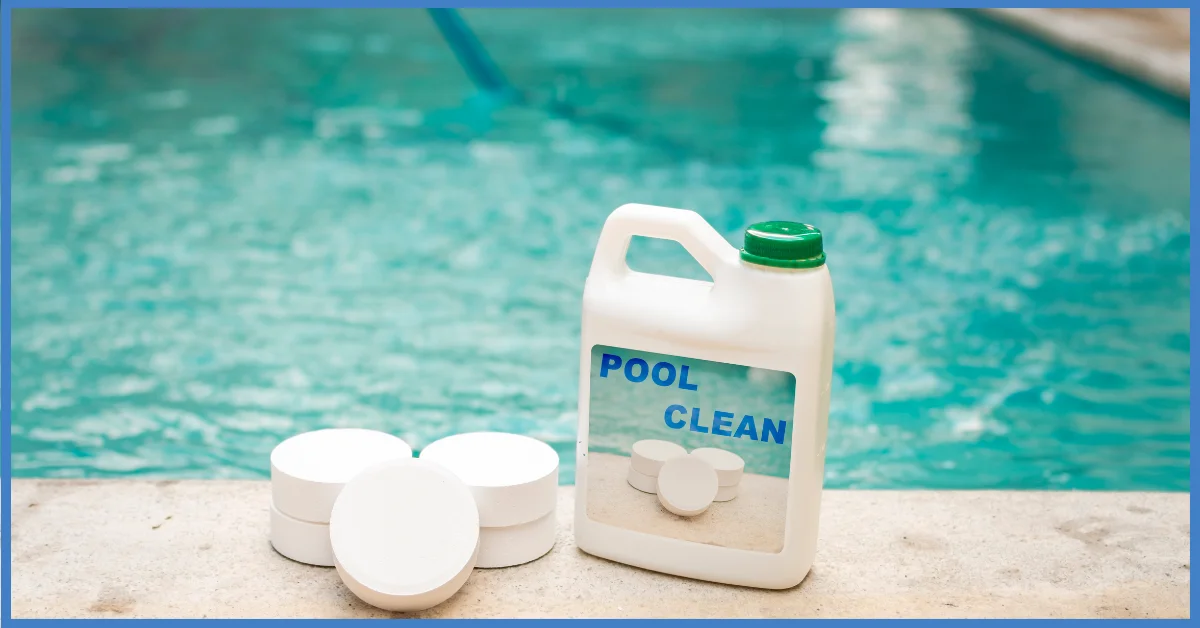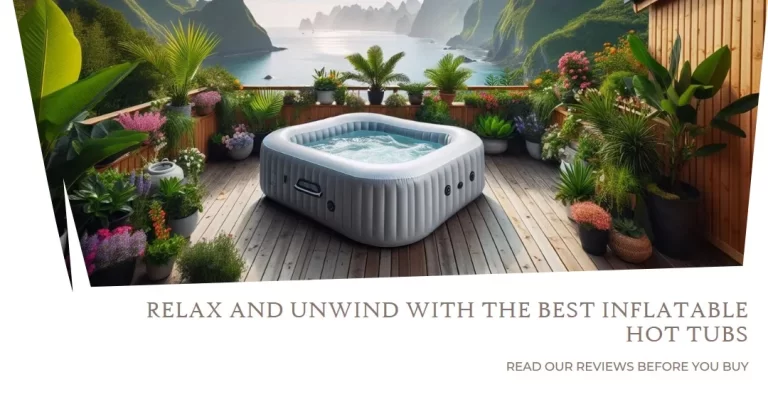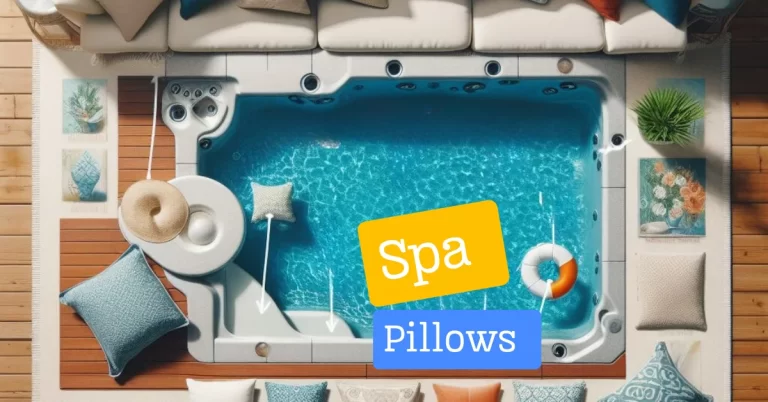Maintaining Your Salt Water Pool: 7 Easy Steps
Find the key to a pristine and inviting swimming experience with our Maintaining Your Salt Water Pool guide. Learn expert tips for optimal chlorine levels and temperature control, ensuring crystal-clear waters and worry-free dives.
In this guide, I’ll provide essential insights and practical steps for perfectly balancing your pool’s chlorine levels and temperature.
How I Maintain My Salt Water Pool in 7 Easy Steps
Saltwater pools are fantastic, but they still need some TLC (tender loving care) to keep them sparkling and safe. Here are the steps I follow to maintain my saltwater pool every week:
- Add the right amount of salt. I check my pool’s salinity level once a month using a salinity test kit. I aim for a range of 2,700 to 3,400 PPM. If it’s too low, I add more salt using a pool salinity calculator. If it’s too high, I dilute it with fresh water.
- Maintain proper water circulation. I run my pool pump for at least 8 hours daily to filter and sanitize the water. I also clean my skimmer basket, pump basket, and filter regularly to remove any debris that may clog them.
- Prevent erosion and calcium buildup. Using test kits or strips, I check my pool’s pH and calcium hardness levels weekly. I keep the pH between 7.2 and 7.6 and the calcium hardness between 200 and 400 PPM. I adjust them with the appropriate chemicals or products if they are out of balance.
- Check my salt cell every 3 months. My salt cell is the heart of my pool system, as it converts salt into chlorine. It can get dirty or damaged over time, so I inspect and clean it every 3 months. I use a cell cleaning kit or soak it in water and muriatic acid for 10 to 15 minutes. Then I rinse it well and reinstall it.
- Keep my water balanced, especially chlorine and stabilizer levels. I use test kits or strips to test my pool’s chlorine and stabilizer levels weekly. I keep the chlorine between 1 to 3 PPM and the stabilizer between 50 to 80 PPM. Stabilizer helps protect chlorine from sunlight, which can break it down quickly. If the levels are too low or high, I adjust them by changing the output setting on my chlorine generator or adding or removing chemicals or water.
- Shock my pool every week. Shocking my pool means adding a hefty chlorine dose to kill germs or algae lurking in the water. I shock my pool every week during peak season or after heavy use, such as after a party or a storm. I use a non-chlorine shock product or set my chlorine generator to chlorinate mode for 24 hours.
- Skim, brush, and vacuum every week. I also clean my pool surface and walls by skimming any floating debris, brushing any dirt or algae spots, and vacuuming any settled particles weekly. This helps prevent staining, cloudiness, and algae growth in my pool.

Role of Chlorine (Maintaining Your Salt Water Pool)
Chlorine serves as the unsung hero of your saltwater pool, working diligently to keep the water safe and hygienic.
Maintaining the right chlorine levels is imperative to prevent harmful bacteria and algae growth. Free chlorine acts as your pool’s defence against contaminants, while total chlorine accounts for the combined chlorine compounds in the water.
Utilize high-purity pool-grade sodium chloride with a minimum purity of 99%. Before adding salt to your pool, consult your owner’s manual to determine whether specific chlorine generators should be deactivated. Additionally, ensure that the pool pump is switched on to facilitate the even distribution of salt throughout the water.
Achieving Optimal Chlorine Levels
Testing and Adjusting Free Chlorine
Regularly test your pool water utilizing a reliable testing kit. Aim to maintain a free chlorine level of 1.0 to 3.0 parts per million (ppm). If your levels fall below this range, shock your pool to boost chlorine quickly and effectively.
How Much Salt to Add to Your Pool
To achieve the ideal salinity level for your pool, adding the right amount of salt is essential. Typically, 2,700 to 3,400 parts per million (PPM) is recommended, with 3,200 PPM being ideal. To determine the amount of salt needed, use a calculator for pool salinity and consult your owner’s manual for their specific recommendations.
🏊 Pool Salinity Calculator
If you add salt for the first time to a 20,000-gallon pool, you will need approximately 568 pounds of pool salt, equivalent to about 14 bags of 40-pound salt.
Liquid Pool Chlorine Concentration
Liquid pool chlorine offers convenience and precision in maintaining proper chlorine levels. Ensure you follow manufacturer guidelines to achieve the recommended concentration. Diluting the liquid chlorine as needed will help you attain the ideal balance.
Impact of Heat on Chlorine
Heat can be a formidable opponent to your pool’s chlorine levels. Higher temperatures accelerate chlorine breakdown, potentially leading to dechlorination. Watch your pool’s temperature to combat this, especially during the hot summer months.
Maintaining the Perfect Pool Temperature
Finding the optimal pool temperature is crucial for comfort and effective chlorine performance. A range of 78 to 82 degrees Fahrenheit is generally recommended. Cooler temperatures slow chemical reactions, allowing chlorine to work its magic more efficiently.
Further Reading:
Above-Ground Pool Costco: This article provides a detailed overview of Costco’s selection of above-ground pools, including prices, sizes, and package options. It helps understand the costs and value of purchasing an above-ground pool from Costco.
Plunge Pool Hot Tub Combo: This guide looks at plunge pool and hot tub combination options. It covers the benefits of combining these features and provides examples of high-quality plunge pool/hot tub combo setups.
Small Pool Hot Tub Combo: An overview of compact pool and spa combinations that maximize leisure space. The article explores scaled-down options perfect for small yards.
DIY Solar Pool Heater—This is a tutorial for constructing your solar-powered pool heating system. It outlines the materials needed, construction steps, and costs for an eco-friendly DIY heating option.
Harmonizing Pool Chemistry
Balancing Chlorine and pH Levels
The delicate equilibrium between chlorine and pH levels significantly impacts your pool’s water quality. Aim for a pH of 7.4 to 7.6 to maximize chlorine’s sanitizing power. Regularly test and adjust both factors to create an environment where chlorine thrives.
Key Takeaway:
Maintaining proper chlorine levels and optimal pool temperature is crucial for a safe and enjoyable swimming experience as you begin to own a saltwater pool. You can become a pool maintenance expert in understanding the science behind these elements and implementing the provided tips. Wishing you a wonderful day with crystal-clear waters and endless refreshing swims!

Ready to Dive In?
Explore more pool maintenance resources on our website to deepen your knowledge and enhance your pool ownership journey. Join the conversation in the comments below and share your successful pool maintenance stories and challenges. Let’s create a community dedicated to the art of pool perfection!
For more reading about the Healing in Style guide or for more knowing about Pools Guide.













5 Comments